Ancient but Deadly: 8 Indian Martial Art Forms and Where You Can Learn Them
Learning a martial art is not only extremely rewarding for your fitness, but can also help you rediscover and reconnect to India's unique martial history. Here's a quick guide to help you figure out which one is right for you.

It wouldn’t be wrong to say that there’s more to martial arts than just a great workout or a self-defence tool. Those who’ve made martial arts central to their existence know that these art forms require dedication, discipline and passion. Another often-overlooked aspect of martial arts is that they often reflect a part of a country’s heritage, history and culture. In fact, some martial art forms trace back to hundreds, and in some cases, thousands of years.
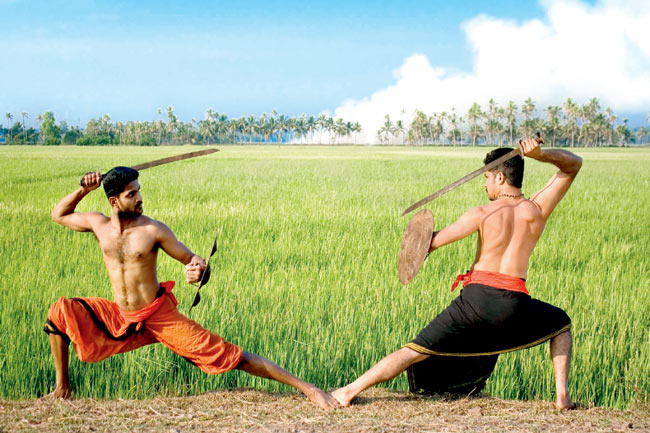
Photo Source
India has a long history of martial arts. Shaolin Kung Fu, a term that includes a large variety of Chinese martial arts, traces its lineage to Bodhidharma, the Indian monk who, according to popular legend, introduced Buddhism to China during the 6th century AD. Monks at the Shaolin Temple (located in Henan Province), still study a combination of martial arts and Buddhist teaching today. Sadly, while Chinese and Japanese fighting forms such as kung fu and ju-jitsu have become national institutions, many of India’s ancient fighting techniques languish as forgotten art forms.
Also Read: Meet India’s Shaolin Warriors who are keeping India’s Ancient Link with the Shaolin Temple Alive!
However, the good news is that some citizens and organisations are trying to resurrect Indian martial arts by teaching them to young Indians. So joining a class is not only extremely rewarding for your fitness, but can also help you rediscover and reconnect to India’s unique martial history.
Since picking the right martial art to learn is crucial if you’re going to enjoy yourself and, ultimately, stick with it, here’s a quick guide to help you figure out which one is right for you.
1. Kalaripayattu
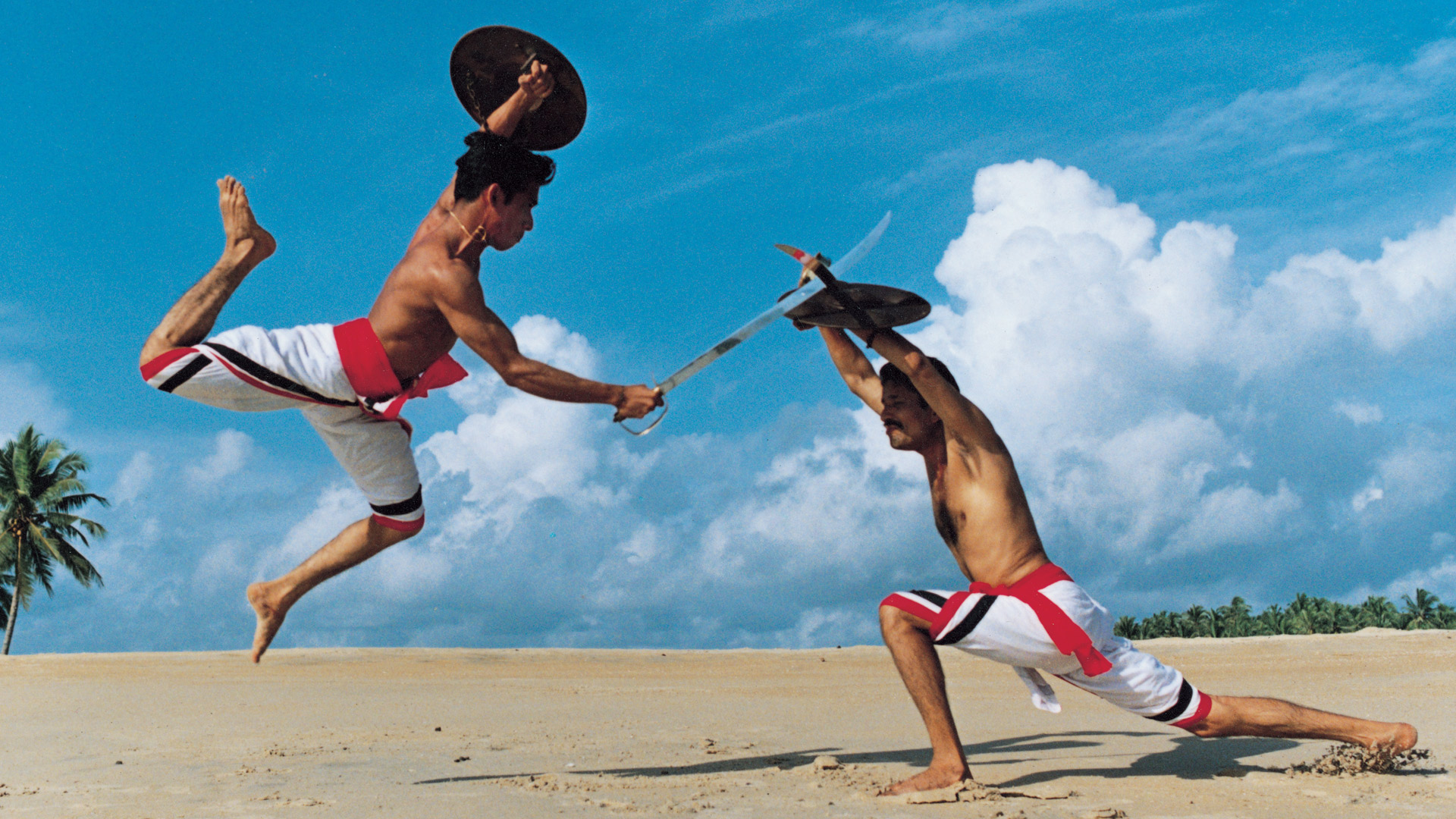
Photo Source
Often known as the ‘Mother Of All Martial Arts’, this 3000-year old art form originating from Kerala, draws inspiration from the raw power, swift movements and sinuous strength of majestic animals – the lion, tiger, elephant, wild boar, snake and crocodile. The term ‘kalari’ refers to the place where this combat style is taught while ‘payattu’ means to practise. This combat style has different levels through which one learns how to fight, with and without, hand-held weapons. It has lately emerged in a new avatar as a source of inspiration for self-expression in contemporary dance forms, theatre, fitness techniques and movies too! This legendary warrior art form most was recently popularised by 76-year-old Meenakshiamma’s heroic exhibition of swordplay against a man half her age.
Learn it here:
Indian schools of Martial Arts
2. Thang Ta (Huyen Langlon)
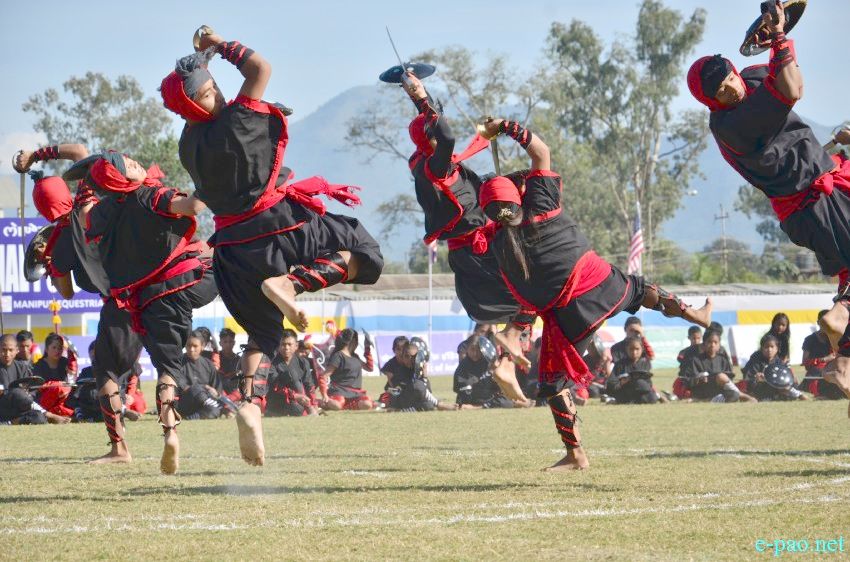
Photo Source
Thang-Ta, which literally means ‘sword and spear’, is one aspect of Huyen Langlon (art of war or method of safe guarding), a traditional martial art from Manipur. Its other aspect is Sarit Sarak that involves unarmed combat. This martial art form integrates various external weapons – the sword, spear and dagger- with the internal practice of physical control through soft movements coordinated with breathing rhythms. However, the heart of Thang-Ta is the sword. There are hundreds of different sword drills that teach the basic strokes and stepping patterns of this fighting style.
Learn it here:
3. Silambam
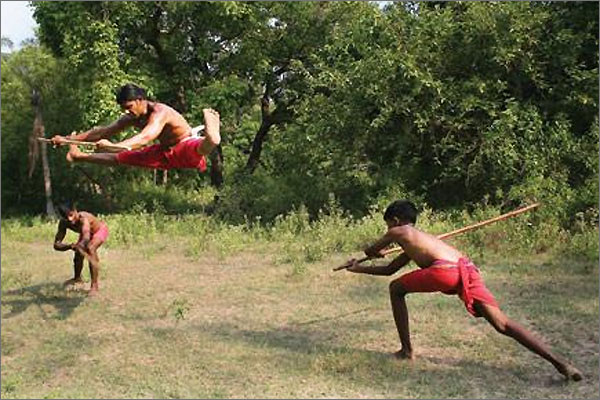
Photo Source
Closely linked to Kerala’s Kalaripayattu, Silambam is an ancient stick-martial art of Tamil Nadu. According to Sangam-era literature, there were a number of exercise centres called silambak-koodams all over the Dravida Nadu region, and the age-old art—patronized by the Chera, Chola and Pandya rulers—is recorded as one of the 64 art forms of ancient India. The word ‘Silam‘ (in Tamil) stands for hills and ‘Mambam‘ (the Marhat word for bamboo) stands for bamboo from the hills; these sticks are usually found on the hills in that particular region. This martial art’s salient features are its well-structured techniques, fluid footwork, and smart fighting strategies.
Learn it here:
4. Gatka (Shastar Vidya)
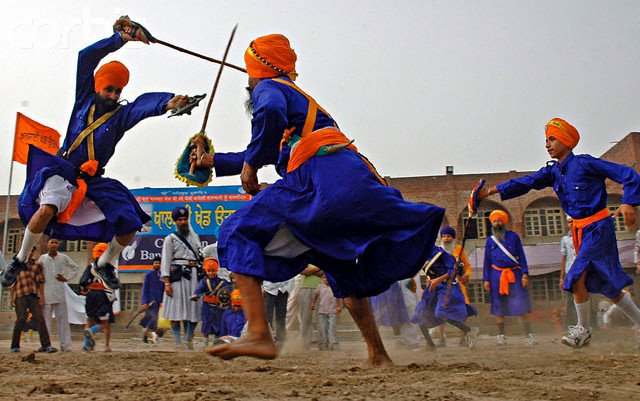
Photo Source
Originating from the state of Punjab, Gatka is believed to be a battle technique created by Sikh warriors during the martial period of great Sikh Gurus. A style of stick fighting between two or more practitioners, Gatka is a toned-down version of the deadlier Shastar Vidya, the fighting style of the fearsome Akali Nihangs, the blue-turbaned sect of Sikh fighters banned by the British after the Anglo-Sikh wars. The sharp swords of Shastar Vidya have been replaced by wooden sticks (soti) and shields (farri) in Gatka.
Learn it here:
5. Sqay
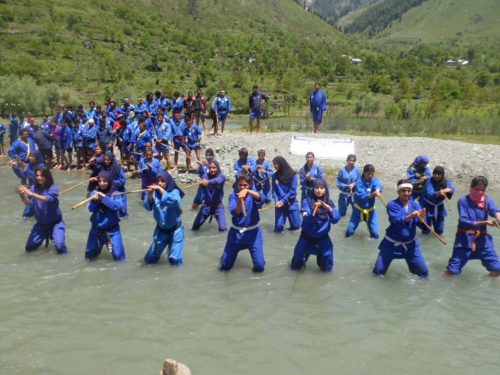
Photo Source
Sqay is an ancient martial art traditionally practiced by the people of Kashmir. Armed sqay makes use of a curved single-edge sword paired with a shield, while unarmed techniques incorporate kicks, punches, locks and chops. Under the International Council Of Sqay’s rules, the sword (tora or tura) is made of synthetic fibre covered in leather. The sword is paired with a shield (bargula) measuring 9-19 inches in diameter, also covered in leather. The official uniform is blue, sometimes with red or yellow piping, consisting of trousers and a cross-front jacket with a belt around the waist. Competitors are judged on stance, timing and perfection of form.
Learn it here:
6. Mardaani Khel

Photo Source
Originally from Maharashtra, Mardani Khel is a weapon-based martial art form. It owes its development to the geographic conditions of the state (hills, caves and valleys). A very ancient form of art, it saw its emergence during the Maratha dynasty. Kolhapur used to be the centre of the Maratha kingdom and the villages around it had talims (training centres) where skilled elders prepared youngsters for war. After the revolt of 1857, the British banned the use of weapons and the talims were forced to turn mardani khel into a folk game to ensure its survival. The use of weapons such as swords, katyar (dagger), lathi-kathi (bamboo sticks), veeta (darts), bhala (javelin), dand and patta (long-bladed swords) continued but the moves were made more stylised and less lethal.
Learn it here:
7. Kushti (Malla Yuddha)

Photo Source
A form of traditional wrestling, Kushti developed during the Mughal Empire by combining the native sport of malla-yuddha (combat wrestling) with influences from Persian varzesh-e bastani (warrior athletics). Interestingly, the words pehlwani and kushti derive from the Persian terms pahlavani and koshti respectively. Once a sport that used to hold great importance in Indian society, at present, Kushti is only practiced in a handful places around India. Kolhapur is one city where the time-tested sport is as popular as ever with rural families frequently sending boys to learn the art at Kolhapur’s thalims or akharas – traditional wrestling schools.
Learn it here:
8. Lathi
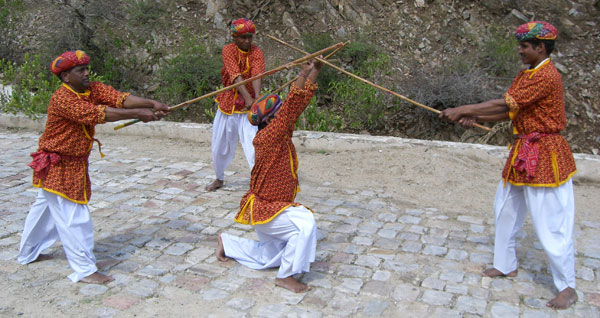
Photo Source
When moved back and forth like a sword and aimed at someone, it cuts through the air, lands with a thwacking sound, peels off a thin layer of skin and sends waves of numbing pain through the body, even as it splinters bone. One hard blow is numbing. This innocuous-looking weapon of destruction is the lathi, the Indian police’s most used crowd control device! Traditionally practised in many parts of India, the lathi (usually a bamboo stick) can be wielded in many ways to give quick lethal blows to the opponent as well as in self-defence by using it as a shield.
Learn it here:
Shotokan Karatedo Federation India
Also Read: This Organisation Is Packing a Punch by Teaching Martial Arts to Hundreds of Schoolgirls
Like this story? Have something to share? Email: contact@thebetterindia.
NEW! Log into www.gettbi.com to get positive news on Whatsapp.

Similar Story

Laundromats in India? Couple Built Rs 100 Crore Biz Washing Dirty Linen Across 100 Cities
Faridabad’s Arunabh Sinha and his wife Gunjan Taneja launched UClean in 2017 to set up an organised laundromat service in India. Currently, they are spread across 100+ cities and have 350+ outlets across the country.
Read more >
If you found our stories insightful, informative, or even just enjoyable, we invite you to consider making a voluntary payment to support the work we do at The Better India. Your contribution helps us continue producing quality content that educates, inspires, and drives positive change.
Choose one of the payment options below for your contribution-
By paying for the stories you value, you directly contribute to sustaining our efforts focused on making a difference in the world. Together, let's ensure that impactful stories continue to be told and shared, enriching lives and communities alike.
Thank you for your support. Here are some frequently asked questions you might find helpful to know why you are contributing?


This story made me
-
97
-
121
-
89
-
167












